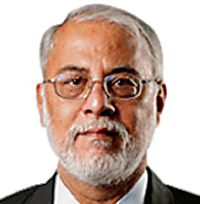Disengagement in the Depsang Bulge is proving to be a tough hurdle for the two sides


A touch of acrimony seems to have crept into the negotiations between India and China regarding their border dispute. The latest issue is about who made a request for the meeting that took place in Johannesburg between Prime Minister Narendra Modi and President Xi Jinping last week. A Chinese Foreign Ministry statement claimed that it happened at India’s request, while sources say that India had sought an informal conversation with China but had rejected a long-standing Chinese request for a formal bilateral meeting.
India and China are working on a three-stage process that seeks to disengage forces from ‘friction points’ in eastern Ladakh.
On Thursday, Foreign Secretary Vinay Mohan Kwatra said the Prime Minister had conveyed to President Xi India’s concerns on the ‘unresolved’ issues along the LAC and that “the maintenance of peace and tranquillity in border areas was essential for the normalisation of India-China ties.” He added that in this context the two leaders agreed “to direct their relevant officials to intensify efforts at expeditious disengagement and de-escalation.”
This was in response to China’s Foreign Ministry saying earlier in the day that “at PM Modi’s request”, Xi had met him in Johannesburg. Besides stressing the need for improving China-India relations, the statement read, “The two sides should bear in mind the overall interests of their bilateral relations and handle properly the border issue so as to jointly safeguard peace and tranquillity in the border region.”
Neither the Chinese nor Indian statements provided details of the talks in Johannesburg, but the Chinese statement did note that “the two leaders had a candid and in-depth exchange of views on the current China-India relations and other questions of shared interest.” So, this was not just a casual conversation.
While ostensibly the Indian and Chinese statements seem quite innocuous, what seems to be missing this time is the word ‘consensus’ that had figured in the report relating to their meeting at the G20 summit in Bali last year. A controversy had arisen there as well. Late last month, after a meeting between NSA Ajit Doval and Chinese Foreign Minister Wang Yi, Beijing said in a statement that in Bali last year, Prime Minister Modi and President Xi had met briefly and reached an “important consensus” on stabilising bilateral ties. After some waffling, the Ministry of External Affairs acknowledged that such a meeting did indeed take place but added that “restoring peace and tranquillity is crucial for the overall resolution.”
India and China had recently held the 19th round of their Corps Commander-level talks on the Indian side of the Chushul-Moldo meeting point. This was followed by talks at the Major General level at the Daulat Beg Oldie (DBO) meeting point. At that time, there was speculation that the meetings were aimed at clearing the decks for a possible Xi-Modi meeting in Johannesburg. But it is now clear that there are still issues preventing disengagement from the last two points blockaded by China in 2020 — the Depsang Bulge and the Charding-Ninglung nullah.
India and China are working on a three-stage process that seeks to disengage forces from what India calls ‘friction points’ in eastern Ladakh, where the Chinese have blocked Indian patrols, to be followed by de-escalation by some 50,000 troops which both have brought up near the border. This is with the hope that it will finally lead to the normalisation of ties between them.
Disengagement in the Depsang Bulge is proving to be a tough hurdle for the two sides. This is not surprising since it was by far the largest area — 970 sq km — affected by the Chinese blockades. New Delhi is understandably leery of accepting a buffer zone which could be entirely at its cost. The Chinese aim seems to be to iron out the bulge and remove any advantage India derives from it.
Part of the Chinese posture comes from the fact that the bulge was the southern locale of the ill-fated forward policy of 1962 where India had deployed poorly supported posts in a north-west/south-east line stretching from the Chip Chap river and its environs. The Indian posts were wiped out in the first 24 hours of the war. What the Chinese now seem to want to assert is the boundary gained by war, but without saying so.
One thing is clear: even if the two sides manage some kind of a limited disengagement in the area, there is likely to be no de-escalation. Both sides have built up permanent facilities in the area and consolidated their positions.
Since 2017, it has been apparent that the Chinese were undertaking a major buildup in Tibet and strengthening their positions along the LAC. Last December, Chris Biggers, who works with radio frequency geospatial intelligence firm HawkEye 360, said in an interview that China had substantial combat force in the region opposite eastern Ladakh and had the ability to counter any Indian move in the area. There is a significant Chinese buildup along the Chip Chap river valley, facing DBO. Another area seeing a buildup is Rutog, at one tip of the Pangong Tso, where two new garrisons have emerged. To back up its forces, the Chinese are constructing a new G695 highway, parallel but closer to the LAC than the old G219 Xinjiang-Tibet highway.
Regardless of how the Depsang issue pans out, it is more than clear that there is no going back to the past now.
